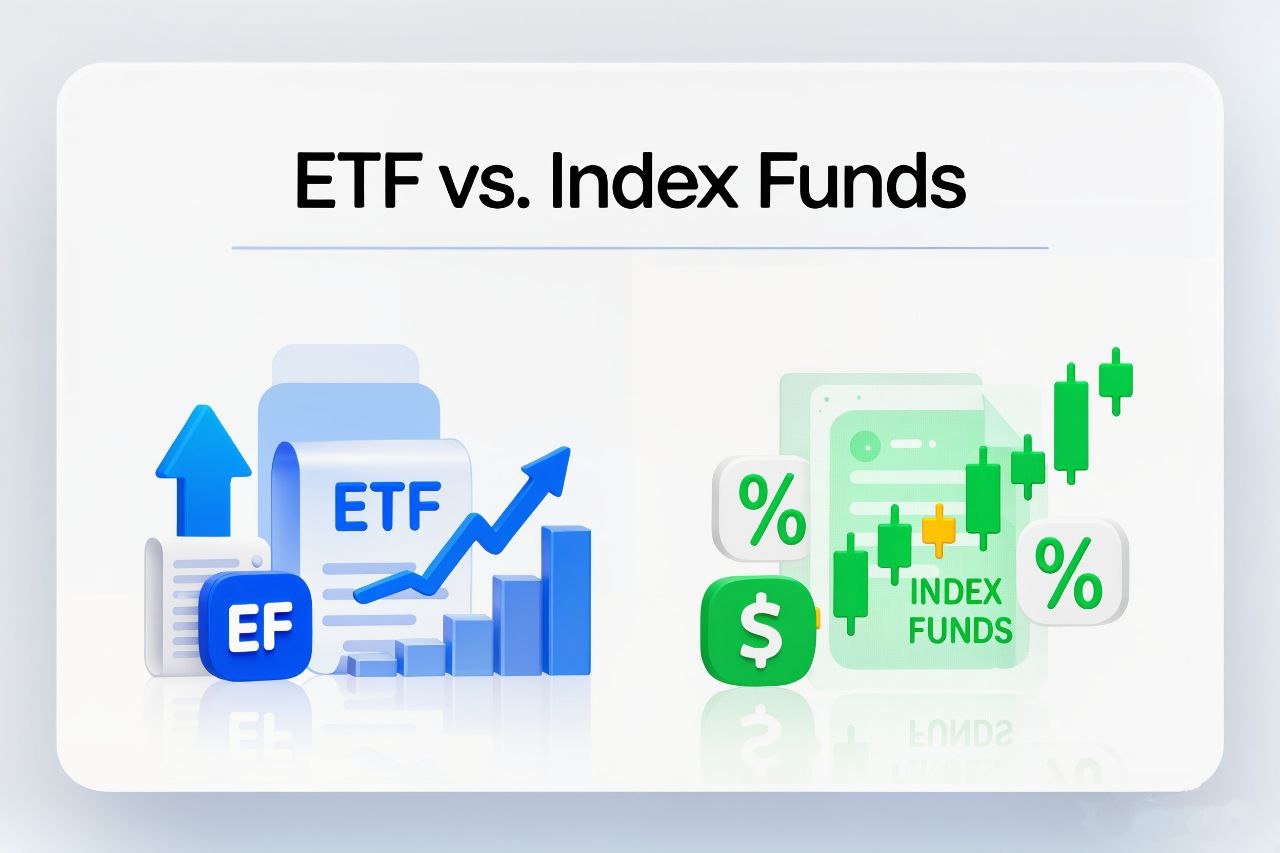Introduction
When you start learning about investing, one of the first questions you may ask is: “Should I invest in ETFs or index funds?” These two investment options are popular with beginners and professionals alike because they are affordable, diversified, and easy to manage. But while they sound similar, ETFs (Exchange-Traded Funds) and index funds have important differences that can affect your investing strategy.
In this guide, we’ll break down what ETFs and index funds are, how they work, their advantages and disadvantages, and which one might be better for your financial goals.
What Are Index Funds?
An index fund is a type of mutual fund that tracks the performance of a market index, like the S&P 500, NASDAQ, or Dow Jones. Instead of trying to beat the market, an index fund mirrors it.
For example, if you invest in an S&P 500 index fund, your money is spread across the 500 largest U.S. companies. This means your returns will match the market’s performance (minus small management fees).
Key points about index funds:
- Managed passively, not actively.
- Bought directly from mutual fund companies or brokers.
- Prices are calculated once per day after the market closes.
- Designed for long-term investing.
What Are ETFs?
An ETF (Exchange-Traded Fund) is also a basket of investments that tracks an index, commodity, or sector. ETFs work much like index funds, but the way you buy and sell them is different.
Unlike index funds, ETFs trade on stock exchanges just like individual stocks. Their prices change throughout the trading day based on market demand.
Key points about ETFs:
- Traded on exchanges during market hours.
- Usually have lower expense ratios than mutual funds.
- Can be bought in small amounts, even a single share.
- Offer flexibility for both long-term and short-term investors.
Similarities Between ETFs and Index Funds
ETFs and index funds share several benefits:
- Diversification: Both spread your money across many assets, lowering risk.
- Low cost: Both typically have lower fees compared to actively managed funds.
- Beginner-friendly: No need to pick individual stocks.
- Passive investing: Both follow a set index rather than relying on constant trading.
Key Differences Between ETFs and Index Funds
While they are similar, the differences matter:
- Trading Flexibility
- ETFs: Bought and sold like stocks throughout the day.
- Index funds: Bought only once per day at closing price.
- Minimum Investment
- ETFs: Can start with the cost of just one share.
- Index funds: Often require a higher minimum investment ($500–$3,000).
- Fees
- ETFs: Typically have very low expense ratios and no sales loads.
- Index funds: Slightly higher fees depending on the fund provider.
- Taxes
- ETFs: More tax-efficient because of the way they are structured.
- Index funds: May distribute capital gains, leading to tax obligations.
Pros and Cons of ETFs
Pros:
- Low cost with very small minimum investment.
- Traded anytime during the market day.
- Great for both beginners and experienced investors.
- Tax-efficient.
Cons:
- Small trading fees (broker commissions) may apply.
- Prices fluctuate, which might tempt emotional trading.
Pros and Cons of Index Funds
Pros:
- Simple to manage and great for hands-off investors.
- Perfect for long-term goals like retirement savings.
- Automatic reinvestment of dividends.
Cons:
- Higher minimum investment required.
- Less flexible because trades only happen once a day.
- Slightly higher management costs compared to ETFs.
Which One Should You Choose?
The choice depends on your financial goals and investing style:
- If you prefer flexibility, low starting costs, and intraday trading, ETFs may be best.
- If you prefer simplicity and a hands-off long-term strategy, index funds might suit you better.
Some investors even choose to use both. For example, they may hold index funds in retirement accounts (like a 401k or IRA) and use ETFs in taxable brokerage accounts for flexibility.
Beginner Tips for Investing in ETFs and Index Funds
- Start Early – The sooner you begin, the more compounding benefits you enjoy.
- Diversify – Don’t rely on just one fund; mix across markets and sectors.
- Keep Costs Low – Look for funds with low expense ratios.
- Automate Contributions – Consistency matters more than timing.
- Avoid Emotional Trading – Stick to your plan, even during market volatility.
The Power of Compounding in Funds
Both ETFs and index funds benefit from compound growth. By reinvesting dividends and holding long-term, your wealth grows exponentially. For example, $10,000 invested in an S&P 500 index fund with an average 7% annual return could grow to nearly $40,000 in 20 years without adding more money.
